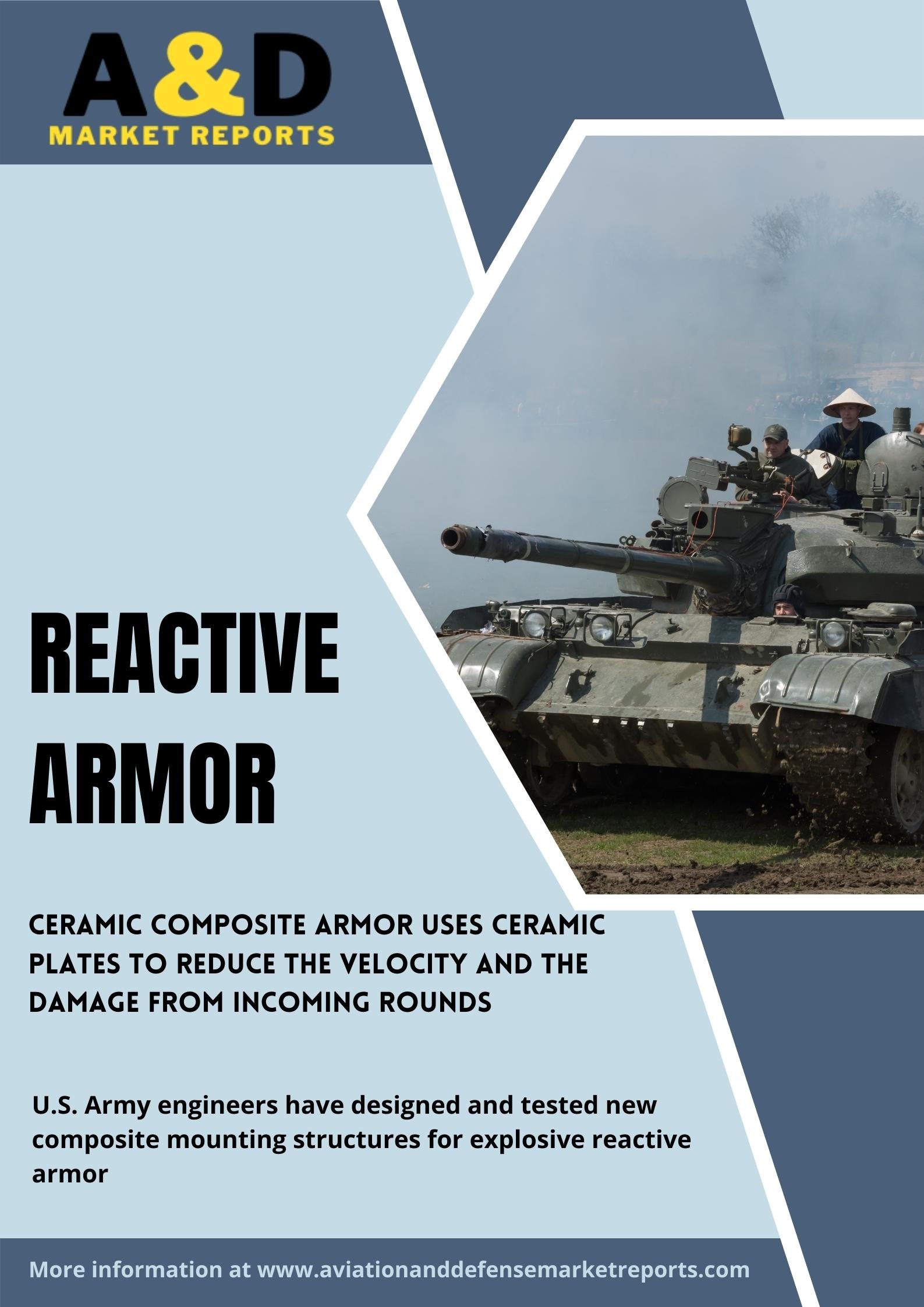Tank armor has evolved from sloped armor of German Panther and Soviet T-34 to reactive, spaced and composite armors of the current era tanks such as Challenger, Leopard, M1 Abrams and T-90 which have and effective armor of about 500mm and above. The real threat to tank armor is the APDS (Armor Piecing Discharging Sabot) kinetic energy shell. The shell relies kinetic energy to penetrate the armor. The APDS shells have undergone several levels of development, the APFSDS (Armor Piercing Fin Stabilized Discharging Sabot) has fin stabilization to stabilize the shell in its flight. The Russian version of APFSDS shells have a ballistic cap to help in penetrating traditional flat armor but are less effective against western composite sloped armor for the turret. German leopard tank uses a combination composites sandwiched between spaced and sloped armor.
Ceramic composite armor uses ceramic plates to reduce the velocity and the damage from incoming rounds. Glass reinforced plastic sandwiched between the armor helps defeat high explosive shells. Plastic and various other lightweight materials have been used in composite armor composition.
Explosive Reactive Armor (ERA) is an additional armor which is placed on the outside of the main armor and is made up explosive liners sandwiched between steel plates. The primary function of an ERA is to diffuse incoming chemical and kinetic shells. ERA is a single use add-on that can be mounted on to almost all modern armored vehicles. The ERA protects the crew and ammunition from taking damage and ensure crew survivability. The desired traits of ERA are modular and easy to install, maintenance free, low collateral damage, low burning rate and very insensitive burning substance.
Electromagnetic armor uses two metal plates and a space between them. The second metal plate is insulated from the first one. Insulating material is also provided between the metal plates. One plate is grounded and the other is not. When a shape charged jet enters the armor it creates a circuit between the two plates which disrupts the jet. The electric current stops the high temperature molten metal jet from penetrating the vehicles. The system can be powered by the regular power system of the vehicle. Electromagnetic armors are lightweight and does not require sensors to operate.
Composite Lightweight Adaptable Reactive Armor is the latest European development which uses composite materials rather than metal or ceramic material. This reduces the risk of shrapnel from the ERA block and reduces collateral damage.
Explosive charges, soft kill and hard kill counter measures are also used to neutralize incoming projectiles. These systems fall under the active protection category and all operated with the help of sensors which is always active and detects the direction of the incoming projectile and launch the counter measure accordingly. Development of CMF (Composite Metal Foam) armor could prove beneficial for armored vehicles as well. CMF is lighter than existing armor and also effective against kinetic warheads and explosive shockwaves. CMF is believed to Reduce total armor weight 65%.
